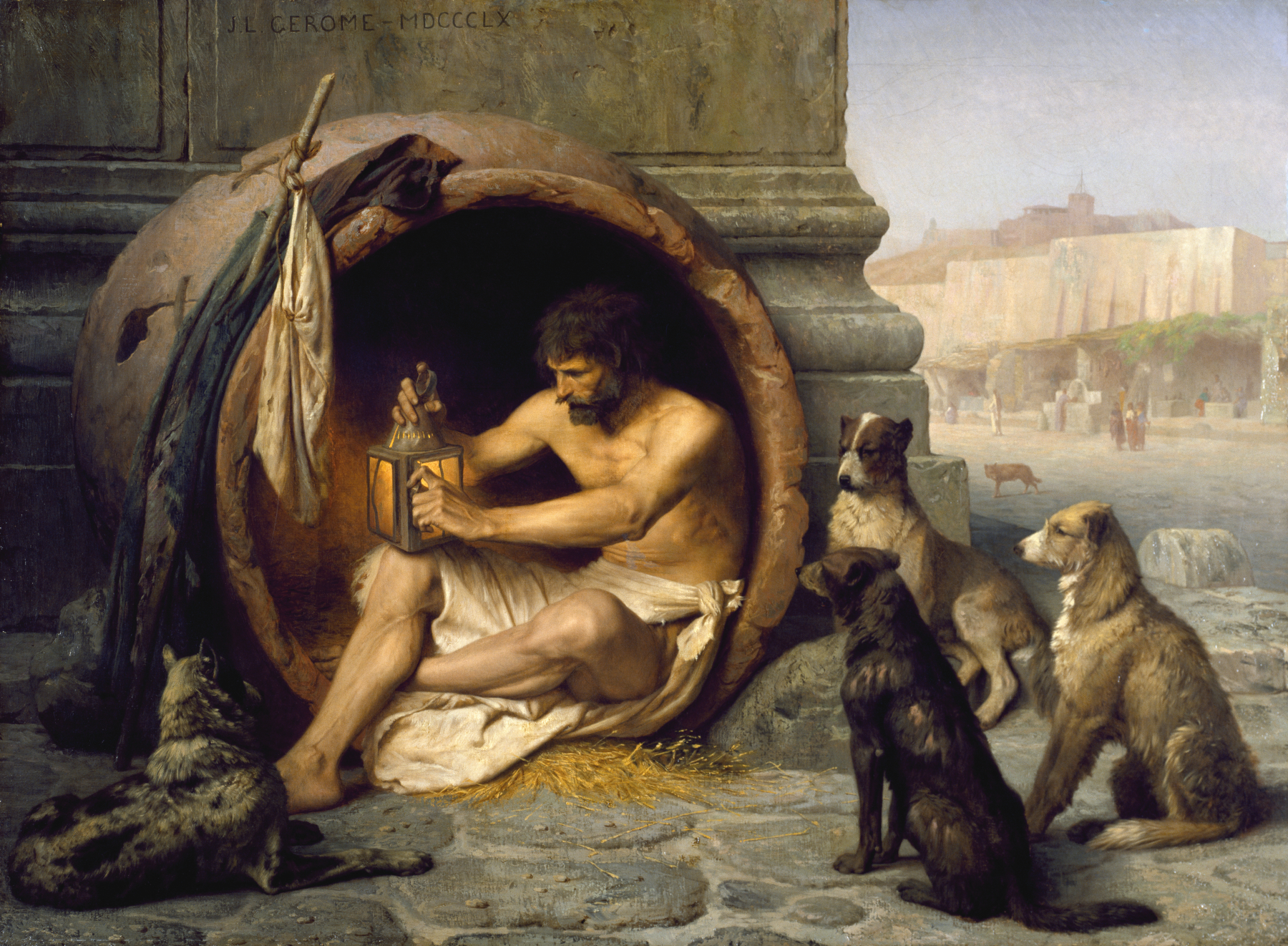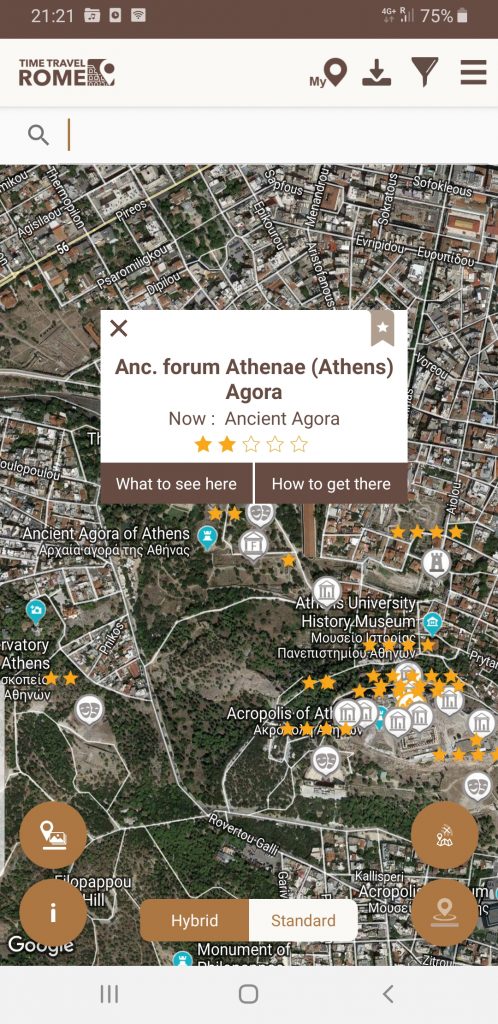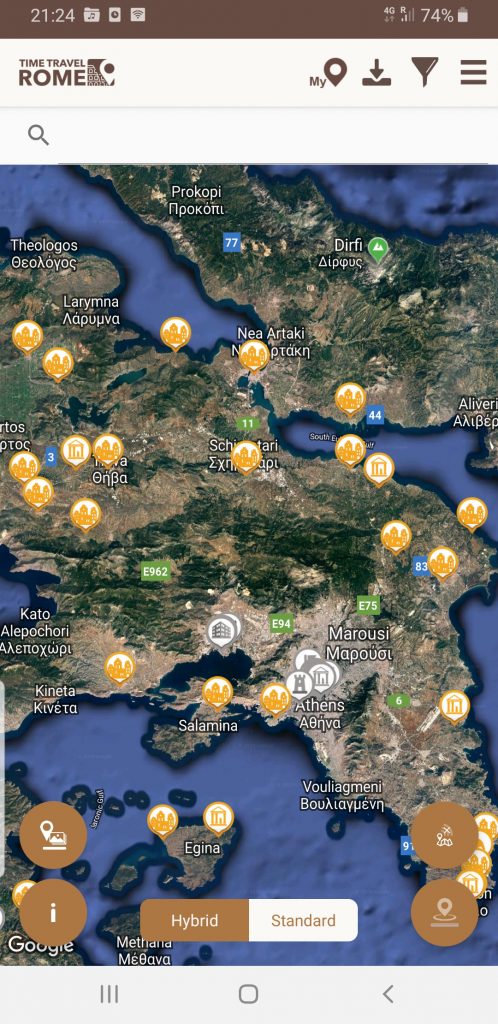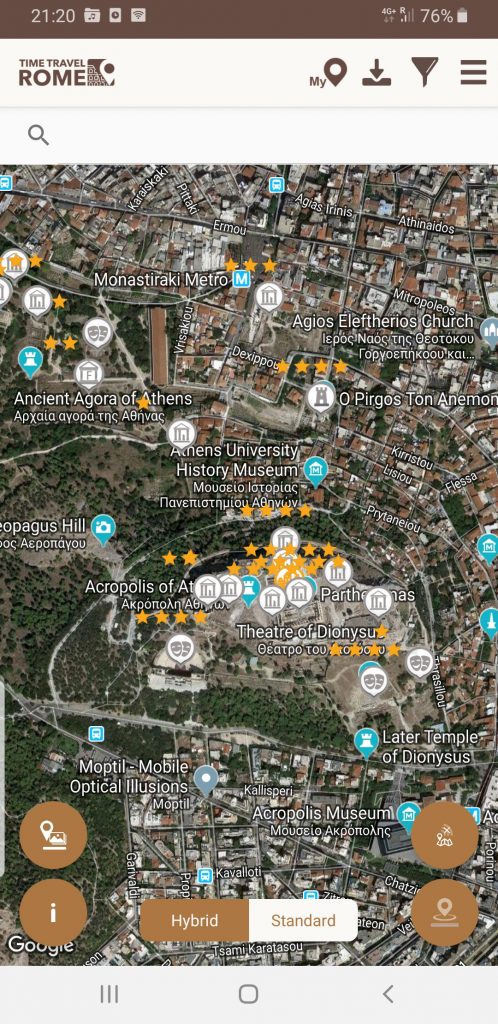Around the early fourth century BCE, a curious man by the name of Diogenes was said to have lived in a large ceramic jar in the Athenian marketplace. Diogenes, or Diogenes ‘the Dog’, was a Greek philosopher renowned for his extreme frugality and at times, peculiar behavior. These behaviors were grounded in the values of Cynic philosophy, with Diogenes as one of the founders of this school of thought.
Founder of Cynic Philosophy
This philosophical approach was to live by nature and free of material possessions, as wealth caused anxiety and problems. The aim was for a clear mind, free from foolishness and false belief. Therefore, social conventions and moral codes had to be questioned. The word ‘Cynic’ comes from the term kynikos, meaning ‘dog-like’. The specifics are a bit hazy, but the use of ‘dog’ as an insult against the Cynics for their shameless behaviour was common. Without a doubt, Diogenes practised these values in excess.
He was born at Sinope, where his father Hicesias was the master of the mint. Interestingly, Diogenes went into exile after he and his father were involved in a debasement of currency scandal. For this reason, Diogenes migrated to Athens. Subsequently, Diogenes began his famous residence in the large jar in the Athenian Agora. Ancient evidence reveals that the ‘Agora’ was the central public gathering space of a Greek city, which was originally used to announce civic and political matters. The Agora then later became a hub for merchants, shopkeepers, traders, politicians, and philosophers. This made it an important part of Athenian civic life. Consequently, the Agora would have been a high traffic area. Hence, one can wonder how frequently Diogenes would have been in the public eye.
Diogenes Tales
It is argued that Diogenes used a more ‘erratic and aggressive style of philosophy’. Although evidence is scattered and claimed to be of doubtful authenticity, the legends about Diogenes and his behaviour certainly reveal him to have been an eccentric character. Here is a selection of these tales:
- Behold, a man!
As a response to Plato’s tongue-in-cheek definition of a man as a bipedal featherless animal, Diogenes plucked a chicken, brought it to Plato’s Academy in Athens and declared “Behold! I have brought you a man!” Consequently, ‘having broad nails’ was added to the definition.
- A drinking cup was too luxurious
Diogenes threw away his cup after watching a child drinking out of his hands, stating “A child has beaten me in plainness of living!”, referencing his austere lifestyle.
- A futile search
Another tale describes Diogenes walking through the streets during the day with his oil lamp lit. When asked about this behaviour, he declared “I’m looking for an honest man!”, implying all those around him were immoral.

Diogenes mit der Lampe auf Menschensuche in Athen, painting dated by the second half of 17th century and attributed to Johann Heinrich Wilhelm Tischbein; the picture is in the public domain.
- When he got caught out for public indecency…
It is said that when Diogenes was approached for masturbating in public, he would lament “If only it were as easy to relieve hunger by rubbing one’s stomach…”
- Food always tastes better when it’s free
When asked what wine he found most pleasant to drink, Diogenes replied, “That for which other people pay.”
- I’ll give you a dog!
During a feast, some of the guests kept throwing bones to Diogenes as you would throw scraps to a dog. In response, Diogenes played the part by lifting his leg and urinating on them.
- I’m sunbathing here, thanks
Legends around when Diogenes met Alexander the Great in Corinth are found in various ancient sources. It is recorded that Alexander came across Diogenes lying on the ground in the sun and asked him if he needed anything. Diogenes responded that he needed nothing else except for Alexander to get out of his sun. Alexander declared that “If I were not Alexander than I would wish to be Diogenes!”
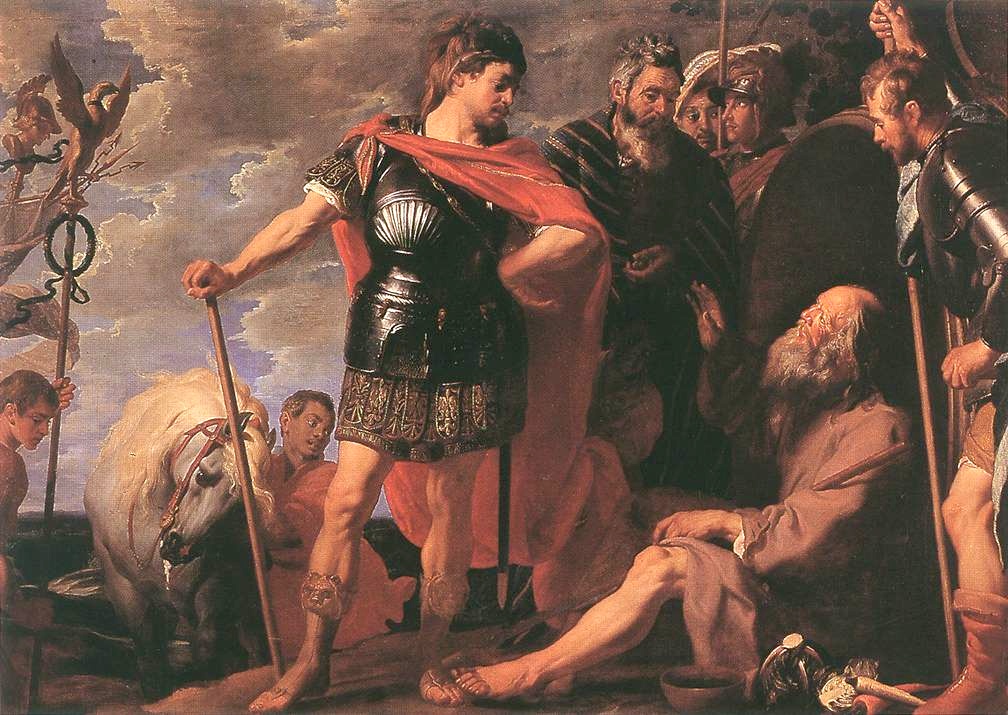
Alexander and Diogenes, painting by Gaspar de Crayer between 1625 and 1630; picture in the public domain.
Later Years
Diogenes spent his later years in Corinth, where he died in 323BCE. He remains an interesting character from the ancient world and continues to amuse and capture one’s imagination. Additionally, as these stories occurred in sites known today, it helps bring them to life. And lastly, Diogenes supposedly lived in a large ceramic jar near the gymnasium in Corinth too.
What to see on Athens Agora today :
The Ancient Agora was founded as early as the 6th century BC and was a centre for commerce and political assembly for the ancient Greeks. While Greece was considered a Roman province following the destruction of Corinth in 146 BC, Athens attempted to maintain independence until Sulla’s siege in 86 BC. Following this, Caesar instigated the construction of a Roman Agora to the east of the ancient Athenian Agora. While this new centre became the primary place for business and commerce, the buildings throughout the ancient Agora continued to be used, including the famous Stoa of Attalus. During the Roman period a number of new monuments and buildings were constructed, which show a focus on the Agora’s use for cultural pursuits. Additional stoas and speaking platforms were constructed as well as the Odeion of Agrippa (15 BC), the Library of Pantainos (AD 100), several temples dedicated to worship of the imperial family, a statue of Emperor Hadrian, and a basilica (2nd century AD). The Heruli raid in AD 267 saw extensive damage to much of the Ancient Agora. The late-Roman fortifications were built following this raid from architectural pieces scavenged from the destroyed buildings.
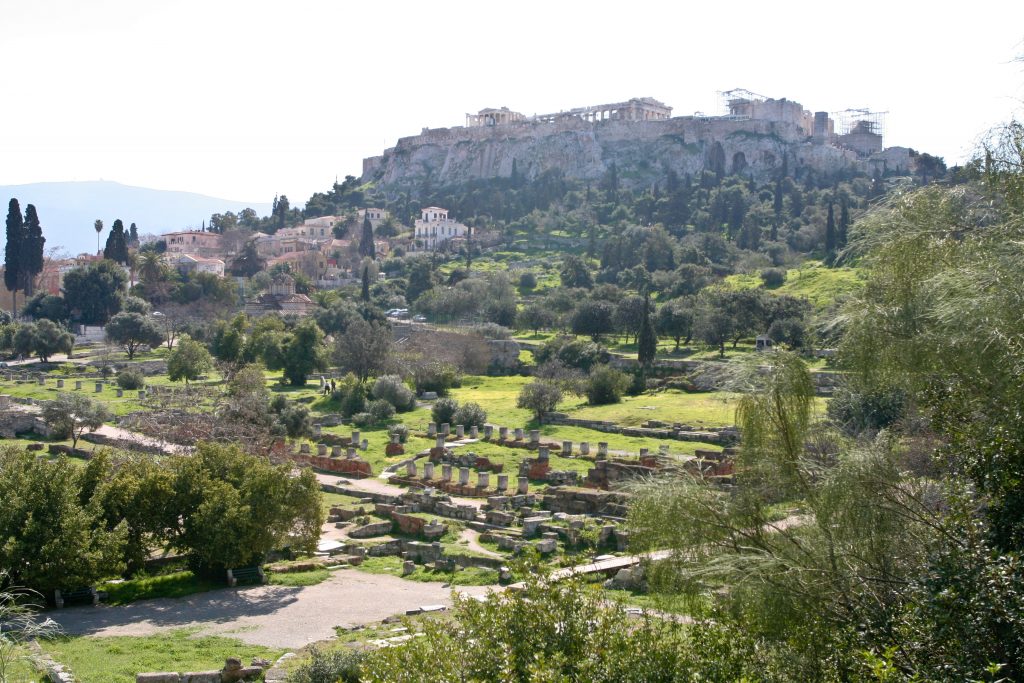
The Athenian Agora is open for visitors to explore the ancient ruins. While the Stoa of Attalus has been restored, many of the Roman-era buildings are fragmentary with only statues, partially standing columns, and the foundations or lower walls to show the original arrangement of the Agora. Of the Imperial-era temples, only scattered architectural elements and foundations remain. The torso portion of the statue of Hadrian is on display. The partially excavated ruins of the Library of Pantainos are visible to the south of the Stoa of Attalus, and show the foundations and lower walls. The later Roman defensive wall was built over the rear library rooms. Much of the late-Roman fortified wall remains with its interesting mix of marble blocks, statue bases, Ionic and Doric columns, and inscribed plaques. A museum is located in the Stoa of Attalos. While many of the displays focus on the earlier Classical or Hellenistic periods, there are also exhibitions of Roman-era artefacts and prominent citizens.
Agora of Athens on Timetravelrome app:
The Agora of Athens is just one of the 25 sites in Athens that TimeTravelRome app shows on the map and describes in detail.
To find out more: Timetravelrome.
Authors: Diogenes story was written for Timetravelrome by Meaghan Zarb. The text about Athens’ Agora was written by Michelle Richards.
Sources:
Diogenes Laertius, Lives of Eminent Philosophers, 6.2.
Arrian, Anabasis of Alexander, 7.
Plutarch, Lives – Alexander, 14.
Lucian, Historia, 3.
American School of Classical Studies at Athens, The Athenian Agora: A Guide to the Excavation and Museum, 3rd edn, Athens, Ekdotike Hellados, 1976.
Baltussen, Han,‘A Bark Worse than His Bite? Diogenes the Cynic and the Politics of Tolerance in Athens’, in The Art of Veiled Speech: Self-Censorship from Aristophanes to Hobbes, Han Baltussen and Peter J. Davies (eds), Philadelphia, University of Pennsylvania Press, 2015.
Hazel, John, Who’s Who in the Greek World?, London/New York, Taylor and Francis Group, 2002.
Piering, Julie, ‘Cynics’, Internet Encyclopedia of Philosophy.
Piering, Julie, ‘Diogenes of Sinope’, Internet Encyclopedia of Philosophy.
Header Photo: Diogenes of Sinope painted by Jean-Léon Gérôme in 1860, now in the Walters Art Museum. The picture is in public domain.
